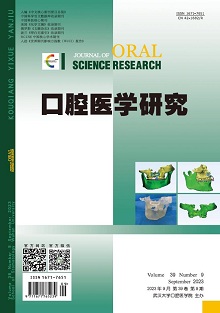|
|
Experimental Study on Overexpression of P2X4 Receptors Mediating Trigeminal Neuralgia
HUANG Ruoyu, SONG Yufeng, ZHOU Min, XU Haomin, LIU Jun, ZHANG Mingming, GAO Yun, XIONG Wei
2023, 39(9):
792-797.
DOI: 10.13701/j.cnki.kqyxyj.2023.09.006
Objective: To validate whether P2X4 receptors mediate the molecular mechanism of trigeminal neuralgia (TN) by regulating the expression of brain-derived neurotrophic factor (BDNF) through transfecting overexpressed P2X4 receptors in a TN rat model. Methods: The P2X4 receptor overexpression plasmid was transfected into the sublingual vein of TN rats. The facial pain threshold assay, quantitative fluorescence PCR, indirect immunofluorescence, protein blotting, and ELISA were used to detect the pain thresholds in rat spinal trigeminal nucleus (STN) and trigeminal ganglia (TG), the transcript levels of P2X4, BDNF, and TrkB, the localization of P2X4 and BDNF, the protein expression of P2X4, BDNF, and TrkB, the phosphorylation levels of ERK, and the expressions of inflammatory factors interleukin-1β (IL-1β) and tumor necrosis factor-α (TNF-α). Results: In the P2X4 receptor overexpression group, pain thresholds were reduced, transcript levels of P2X4, BDNF receptor, and TrkB were increased in STN and TG sites (P<0.01), BDNF receptor was co-localized with microglial marker OX42 in STN, P2X4 was co-localized with glial fibrillary acidic protein (GFAP) in TG, ERK phosphorylation was increased in STN and TG sites (P<0.01), and IL-1β and TNF-α expression levels were increased in serum (P<0.01). Conclusion: Overexpression of P2X4 receptors decreased pain thresholds in rats, suggesting that P2X4 ions are involved in the TN pain pathway by the mechanism that P2X4 regulates the BDNF/ERK pathway, and enhances ERK phosphorylation and expression of inflammatory factors IL-1β and TNF-α.
References |
Related Articles |
Metrics
|

